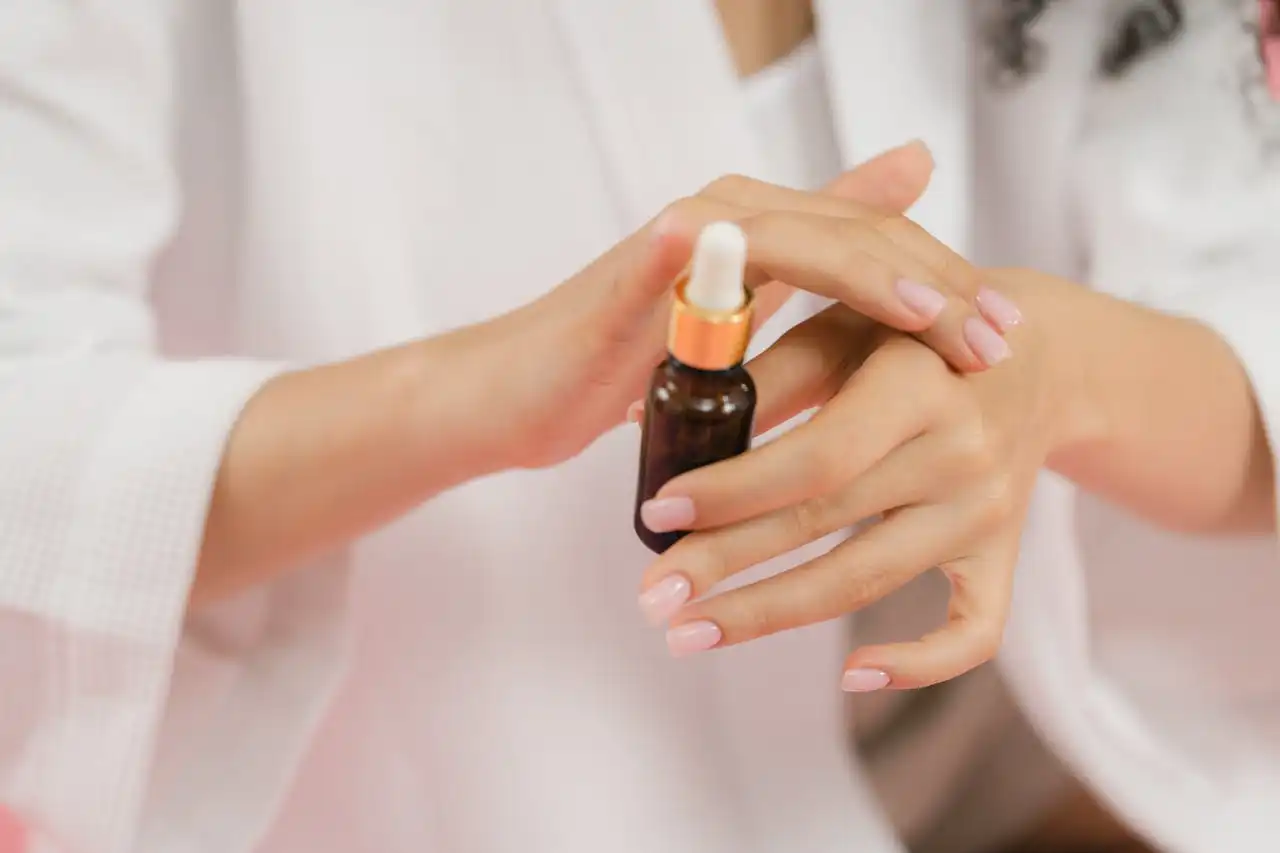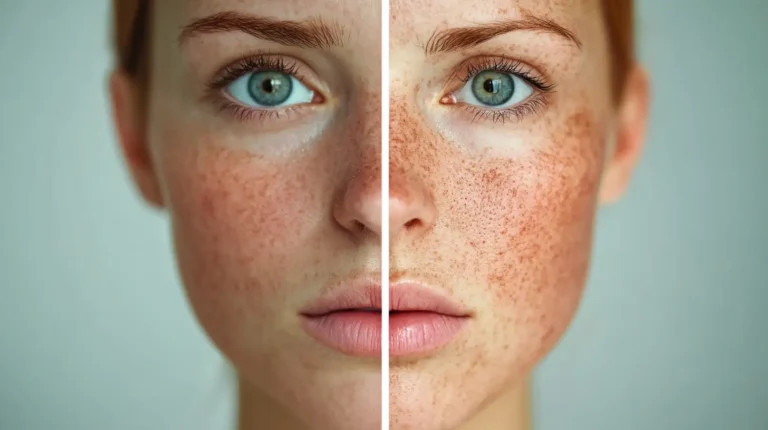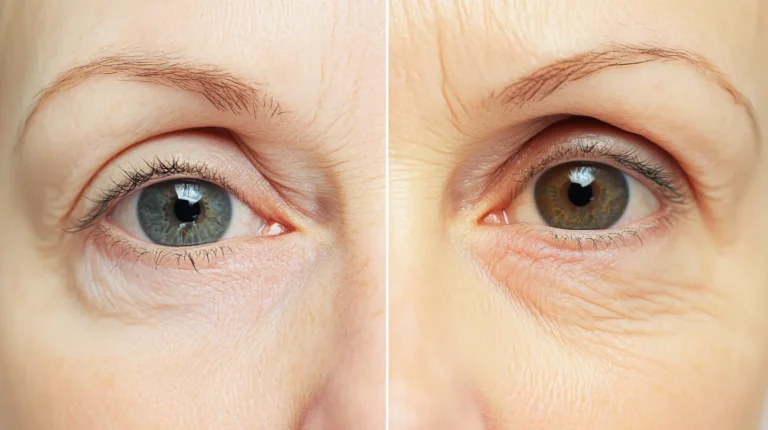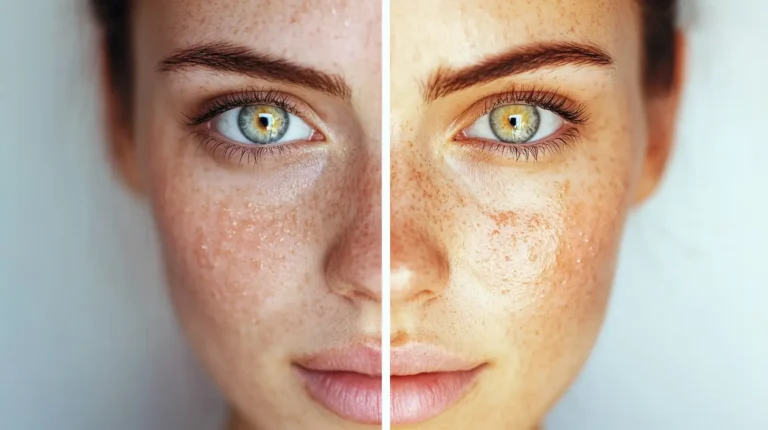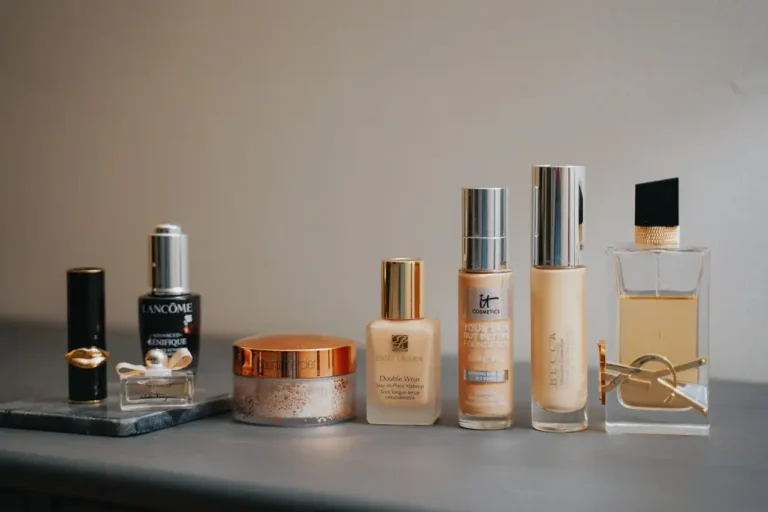The Best Serums for Acne-Prone Skin
Finding the right serum for acne-prone skin feels like navigating a maze of conflicting advice and overwhelming options.
You want clear, healthy skin without the irritation, dryness, or worsening breakouts that many products cause.
The good news? The right serum can transform your complexion when you understand what to look for.
Understanding What Makes a Serum Acne-Fighting
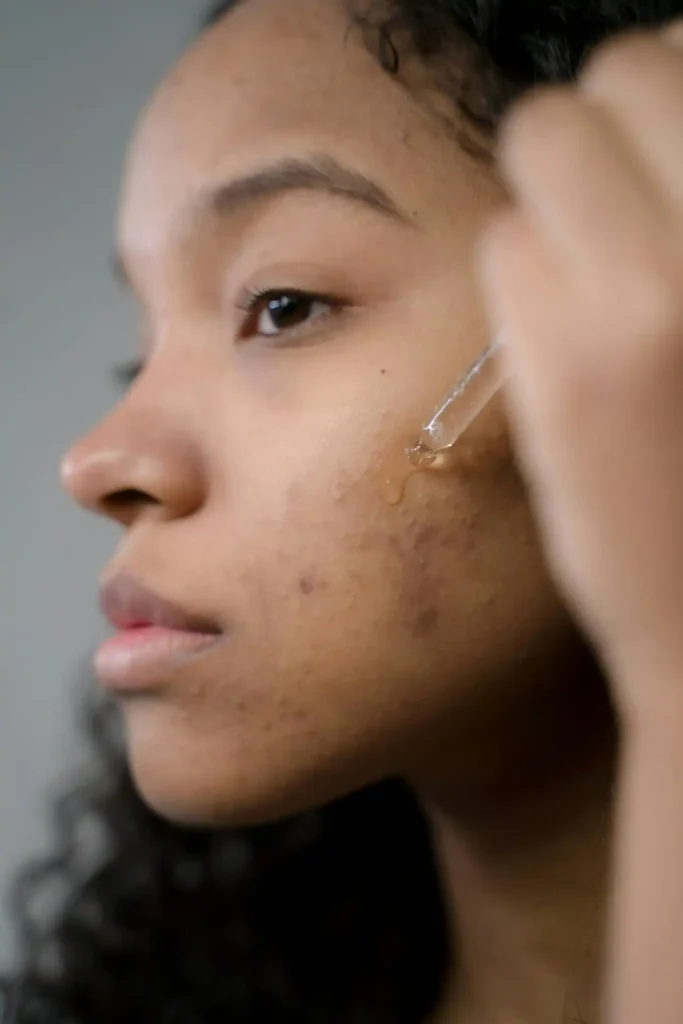
Serums work differently than your regular moisturizer or cleanser. Your skin naturally maintains a slightly acidic pH, so these formulas work harmoniously with your skin’s biology.
These lightweight, concentrated formulas deliver active ingredients deep into your skin layers where they can tackle acne at its source.
The best acne-fighting serums contain ingredients that address multiple causes of breakouts simultaneously.
They unclog pores, reduce inflammation, kill acne-causing bacteria, and regulate oil production without stripping your skin’s natural barrier.
You’ll find that effective acne serums typically feature water-based or gel-like textures that absorb quickly without leaving residue.
This lightweight consistency prevents pore-clogging while ensuring the active ingredients penetrate effectively.
Look for serums with pH levels between 3.5 and 4.5, as this acidic environment helps many acne-fighting ingredients work more effectively.
Key Ingredients That Actually Work
Salicylic acid stands as one of the most effective ingredients for acne-prone skin. You’ll find it works particularly well for blackheads and whiteheads.
This beta-hydroxy acid (BHA) penetrates deep into your pores, dissolving the oil and dead skin cells that create blockages.
Unlike harsh scrubs that irritate your skin, salicylic acid provides gentle chemical exfoliation.
It removes dead skin cells from both the surface and inside your pores, preventing the buildup that leads to breakouts.
Niacinamide deserves a spot in every acne-fighting routine. This form of vitamin B3 reduces inflammation, regulates oil production, and strengthens your skin barrier.
You’ll notice it helps minimize the appearance of pores while reducing redness from existing breakouts.
Research shows niacinamide works well with other acne ingredients, making it an excellent addition to combination serums.
It rarely causes irritation, even for sensitive skin types. You’ll find it particularly effective for inflammatory acne like papules and pustules.
Benzoyl peroxide kills the bacteria that contribute to acne formation. Start with lower concentrations (2.5%) to minimize potential dryness and irritation.
This ingredient works by releasing oxygen into your pores, creating an environment where acne bacteria cannot survive.
Higher percentages don’t necessarily provide better results but often increase side effects.
Retinoids: The Gold Standard for Long-Term Results
Retinoids represent the most scientifically proven ingredients for treating acne. These vitamin
A derivatives increase cell turnover, preventing dead skin cells from clogging your pores while promoting the growth of healthy new skin.
You can choose between over-the-counter retinol and prescription-strength tretinoin. Start using retinoids slowly, beginning with once or twice weekly applications.
Retinol provides gentler results with less irritation, making it ideal for beginners or sensitive skin. Tretinoin offers more dramatic results but requires medical supervision.
Both forms of retinoids improve your skin’s texture, reduce hyperpigmentation from old breakouts, and prevent new acne formation.
You’ll typically see initial results within 6-8 weeks, with continued improvement over several months.
Gradually increase frequency as your skin builds tolerance. Always apply retinoids to clean, dry skin and follow with moisturizer.
Alpha Hydroxy Acids for Surface-Level Treatment
Alpha hydroxy acids (AHAs) like glycolic acid and lactic acid provide excellent surface exfoliation for acne-prone skin.
These ingredients remove dead skin cells from your skin’s surface, revealing smoother, brighter skin underneath.
Glycolic acid, derived from sugar cane, offers the smallest molecular size among AHAs. Apply AHA serums in the evening and always follow with SPF during the day.
This characteristic allows it to penetrate deeply and provide thorough exfoliation. You’ll find it particularly effective for post-acne marks and uneven skin texture.
Lactic acid provides gentler exfoliation while offering additional moisturizing benefits.
This AHA works well for sensitive or dry acne-prone skin types that cannot tolerate stronger acids.
AHAs make your skin more photosensitive, so you must use sunscreen diligently when incorporating these ingredients into your routine.
Choosing the Right Serum for Your Specific Skin Type
Oily skin types can handle stronger concentrations and more frequent application of active ingredients.
You might benefit from serums containing higher percentages of salicylic acid or benzoyl peroxide, applied daily or twice daily as tolerated.
Your oily skin produces excess sebum, which provides more “cushioning” against potential irritation from active ingredients.
However, this doesn’t mean you should skip moisturizer or use harsh products. Combination skin requires a strategic approach.
You might need different serums for different areas of your face, using stronger formulations on your T-zone and gentler options on drier areas like your cheeks.
Consider using targeted treatments rather than applying the same product everywhere. These formulations provide acne-fighting benefits without excessive irritation.
This approach allows you to address specific concerns without over-treating or under-treating different areas.
Sensitive acne-prone skin benefits from gentler ingredients like niacinamide, low-concentration salicylic acid, or encapsulated retinol.
You’ll want to introduce new serums gradually, starting with every other night or even twice weekly.
Monitor your skin’s response carefully and adjust frequency based on tolerance rather than rushing to see results.
How to Layer Serums in Your Routine
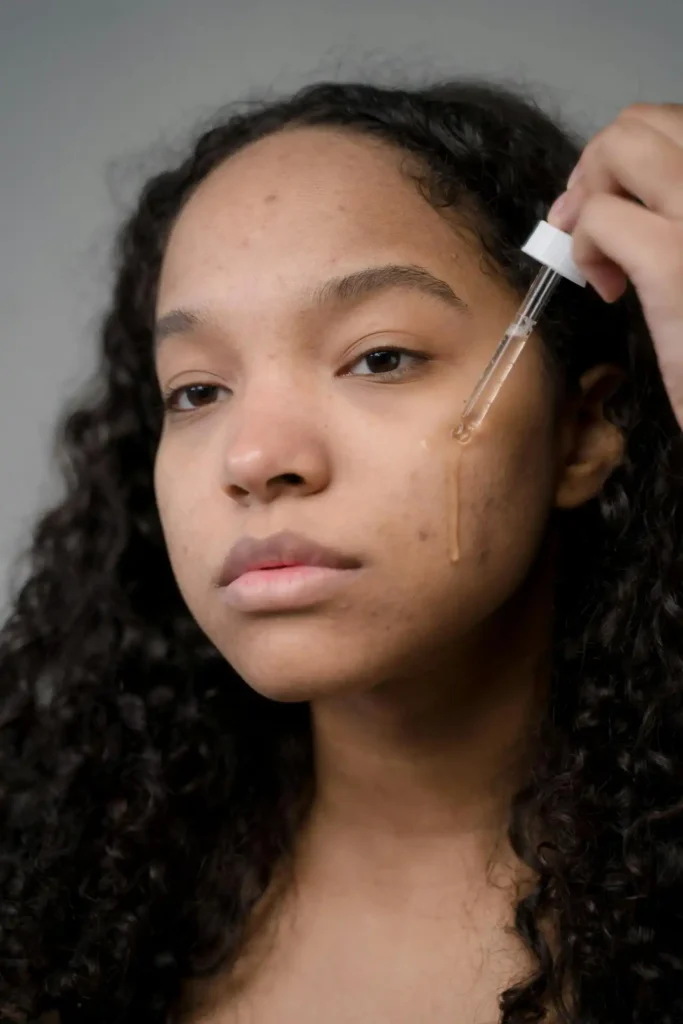
The order of application significantly impacts how well your serums work. Apply products from thinnest to thickest consistency, allowing each layer to absorb before applying the next.
Start with your cleanser, then apply any water-based serums like niacinamide or hyaluronic acid. Follow with oil-based or thicker serums, then moisturizer and sunscreen during the day.
Wait 10-15 minutes between each layer to ensure proper absorption. Rushing this process can cause products to pill up or reduce their effectiveness.
You don’t need to use every active ingredient daily. Alternate between different serums to prevent over-exfoliation and irritation.
For example, use retinoids on Monday, Wednesday, and Friday, while using AHAs on Tuesday and Thursday.
Common Mistakes That Sabotage Your Results
Using too many active ingredients simultaneously often causes more harm than good.
Your skin can only process so many treatments at once, and overloading leads to irritation, dryness, and potential worsening of acne.
Start with one new serum at a time, allowing 2-4 weeks to assess its effects before adding another product.
This approach helps you identify which ingredients work best for your skin. Skipping moisturizer ranks among the most counterproductive mistakes.
When you strip away too much oil, your skin compensates by producing even more sebum, potentially worsening your acne.
Choose lightweight, non-comedogenic moisturizers that won’t clog your pores. Even oily skin needs hydration to maintain a healthy barrier function.
Expecting immediate results sets you up for disappointment and product-hopping. Most acne serums require 6-12 weeks to show significant improvement, with some taking even longer.
Document your skin’s progress with photos rather than relying on memory. Day-to-day changes are subtle, but weekly or monthly comparisons often reveal substantial improvement.
When to Expect Results and How to Track Progress
Initial improvements often appear within 2-4 weeks, typically in the form of reduced inflammation and fewer new breakouts.
However, complete clearing of existing acne and improvement in skin texture takes longer.
Your skin undergoes a complete renewal cycle approximately every 28 days.
This means you need at least one full cycle to see how a new serum affects your skin, and often 2-3 cycles for optimal results.
Take photos in consistent lighting conditions weekly to track your progress objectively. Include close-up shots of problem areas and full-face photos to monitor overall improvement.
Keep a simple skin journal noting new products, breakout patterns, and potential triggers. This information helps you identify what works and what doesn’t over time.
Signs You Need to Adjust Your Serum Choice
Excessive dryness, peeling, or irritation indicates you’re using products that are too strong for your current skin condition.
Scale back the frequency of application or switch to gentler alternatives. Consider consulting a dermatologist for stronger treatments or alternative strategies.
If your acne worsens significantly after 6-8 weeks of consistent use, the serum might not be right for your skin type.
Some people experience initial purging with retinoids, but worsening acne beyond this period suggests incompatibility.
Persistent redness, burning, or stinging signals potential allergic reactions or sensitivity. Discontinue use immediately and consult a dermatologist if symptoms persist.
Lack of any improvement after 12 weeks of consistent use suggests you need a different approach.
Professional vs. Over-the-Counter Options
Over-the-counter serums provide excellent results for mild to moderate acne. This flexibility allows for personalized skincare approaches.
These products offer convenience and affordability while delivering clinically proven ingredients at effective concentrations.
You can experiment with different formulations and brands to find what works best for your skin without medical supervision.
Professional treatments become necessary for severe acne, cystic breakouts, or cases that don’t respond to over-the-counter options.
Dermatologists can prescribe stronger concentrations and combination therapies. These treatments typically provide faster, more dramatic results but require medical oversight.
Professional serums often contain higher percentages of active ingredients or unique formulations not available in retail products.
Building a Complete Acne-Fighting Routine
Your serum works best as part of a comprehensive skincare routine rather than as a standalone solution.
Combine it with gentle cleansing, appropriate moisturizing, and consistent sun protection.
Morning routines should focus on protection and gentle treatment. Use antioxidant serums like vitamin C, followed by moisturizer and broad-spectrum sunscreen with at least SPF 30.
Evening routines allow for stronger active ingredients that might increase photosensitivity.
This is when you’ll apply retinoids, AHAs, or higher concentrations of other acne-fighting ingredients.
Consistency matters more than perfection. Using a simple routine consistently produces better results than sporadically using complex, multi-step regimens.
Lifestyle Factors That Impact Serum Effectiveness
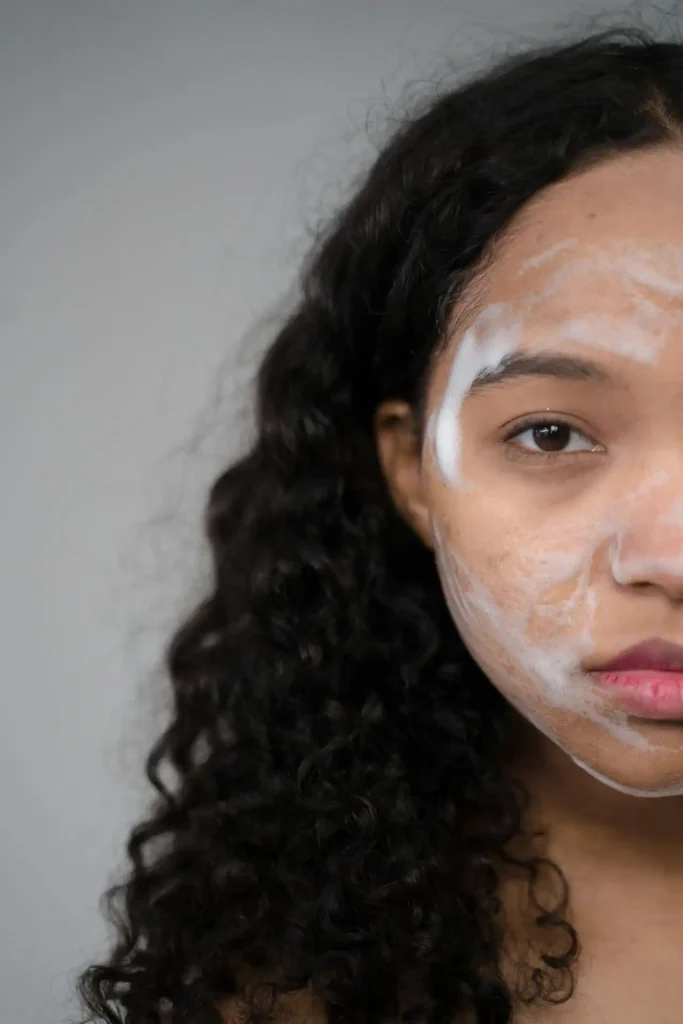
Your diet, stress levels, and sleep quality all influence how well acne treatments work. Practice stress management techniques alongside your skincare routine for optimal results.
High-glycemic foods and dairy products can worsen acne in some people, potentially undermining your serum’s effectiveness.
Stress increases cortisol production, which can stimulate oil production and inflammation.
Getting adequate sleep allows your skin to repair and regenerate effectively. Poor sleep quality can slow healing and make your skin more reactive to treatments.
Regular exercise improves circulation and helps manage stress, but always cleanse your skin immediately after sweating to prevent pore blockages.
Conclusion
The right acne serum transforms your skin when chosen thoughtfully and used consistently.
Focus on proven ingredients, start slowly, and give your routine time to work for lasting results.

